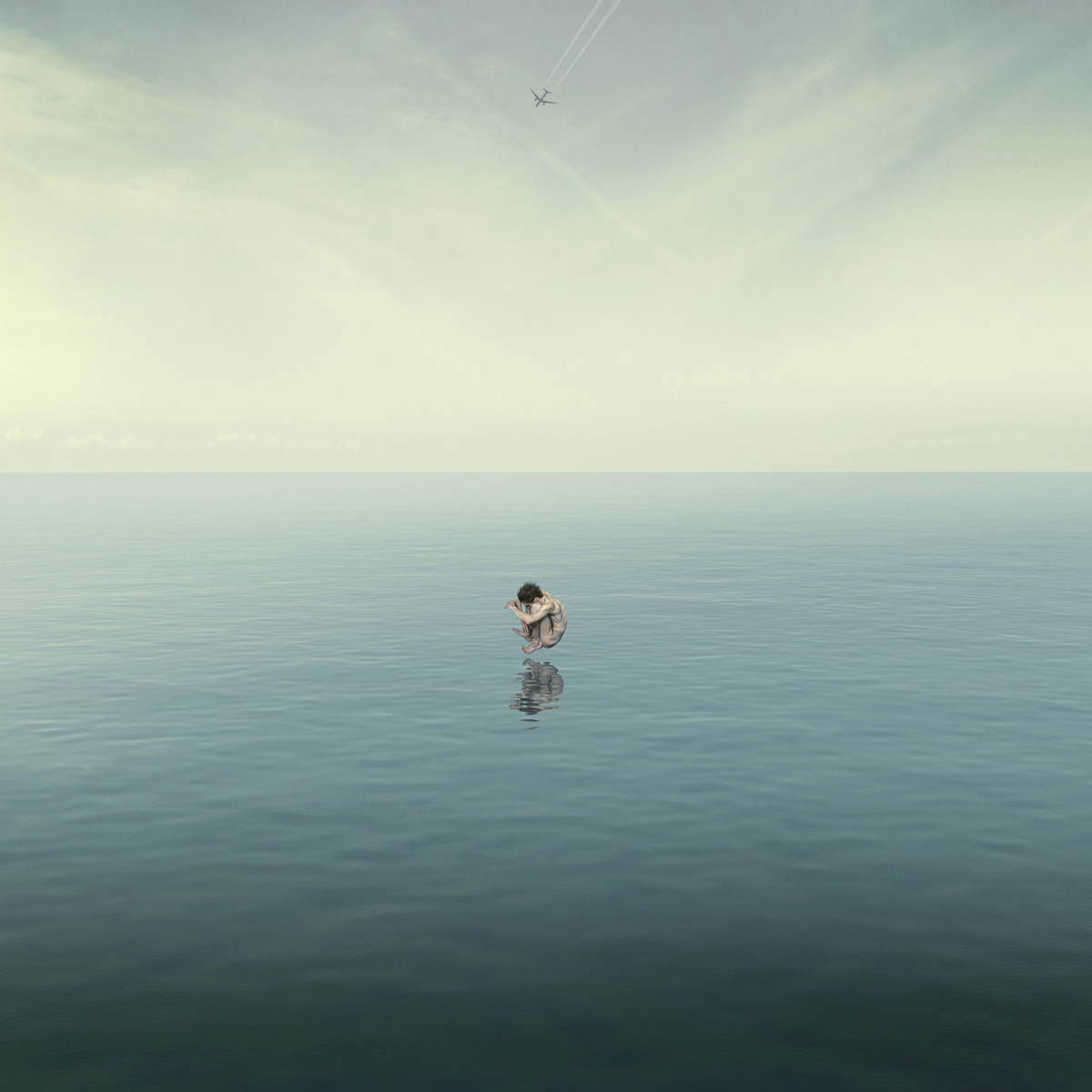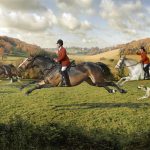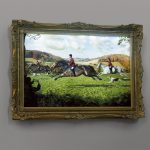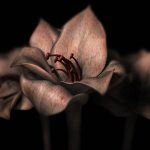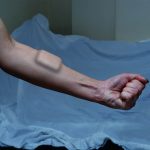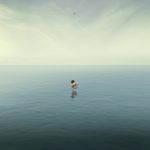-
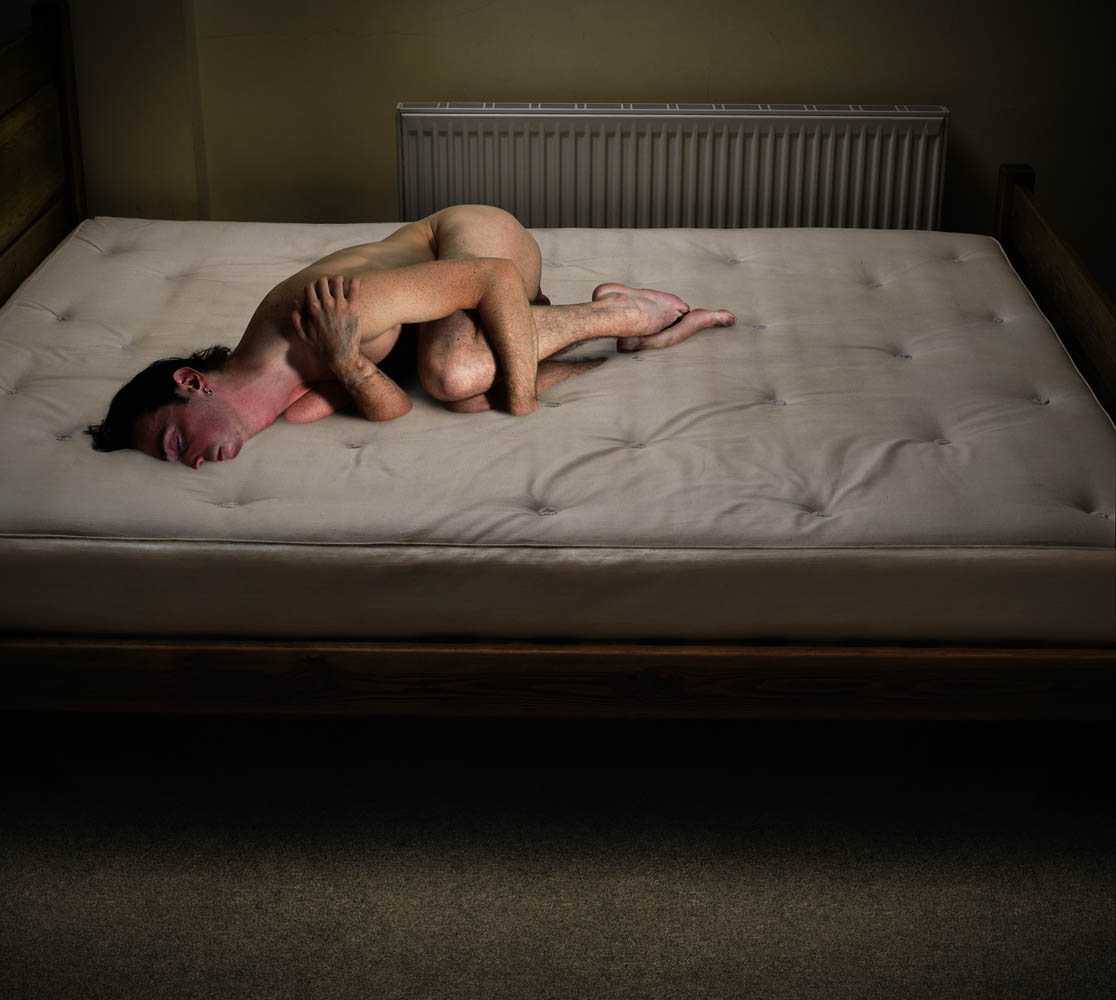
-
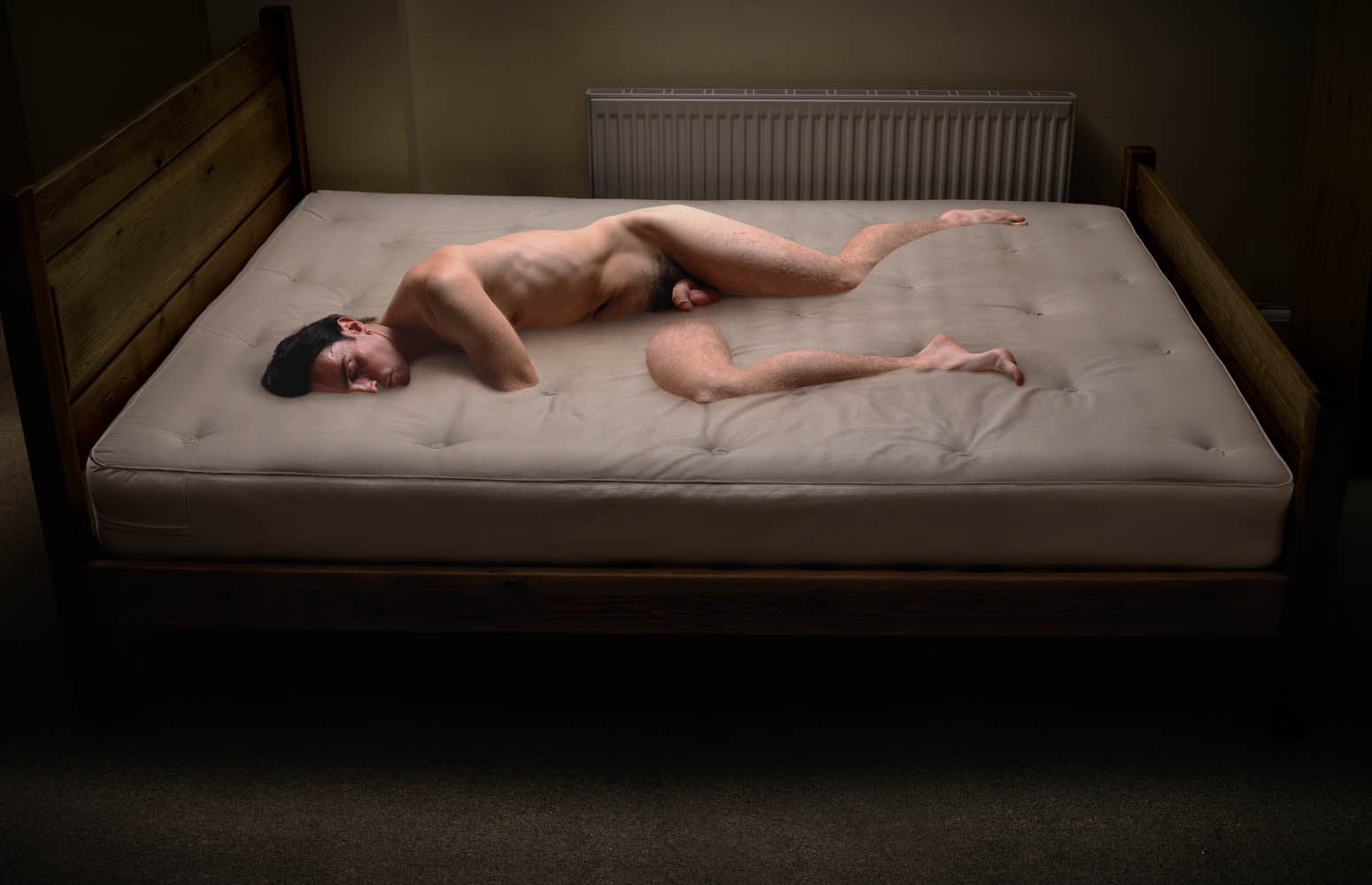
-

-
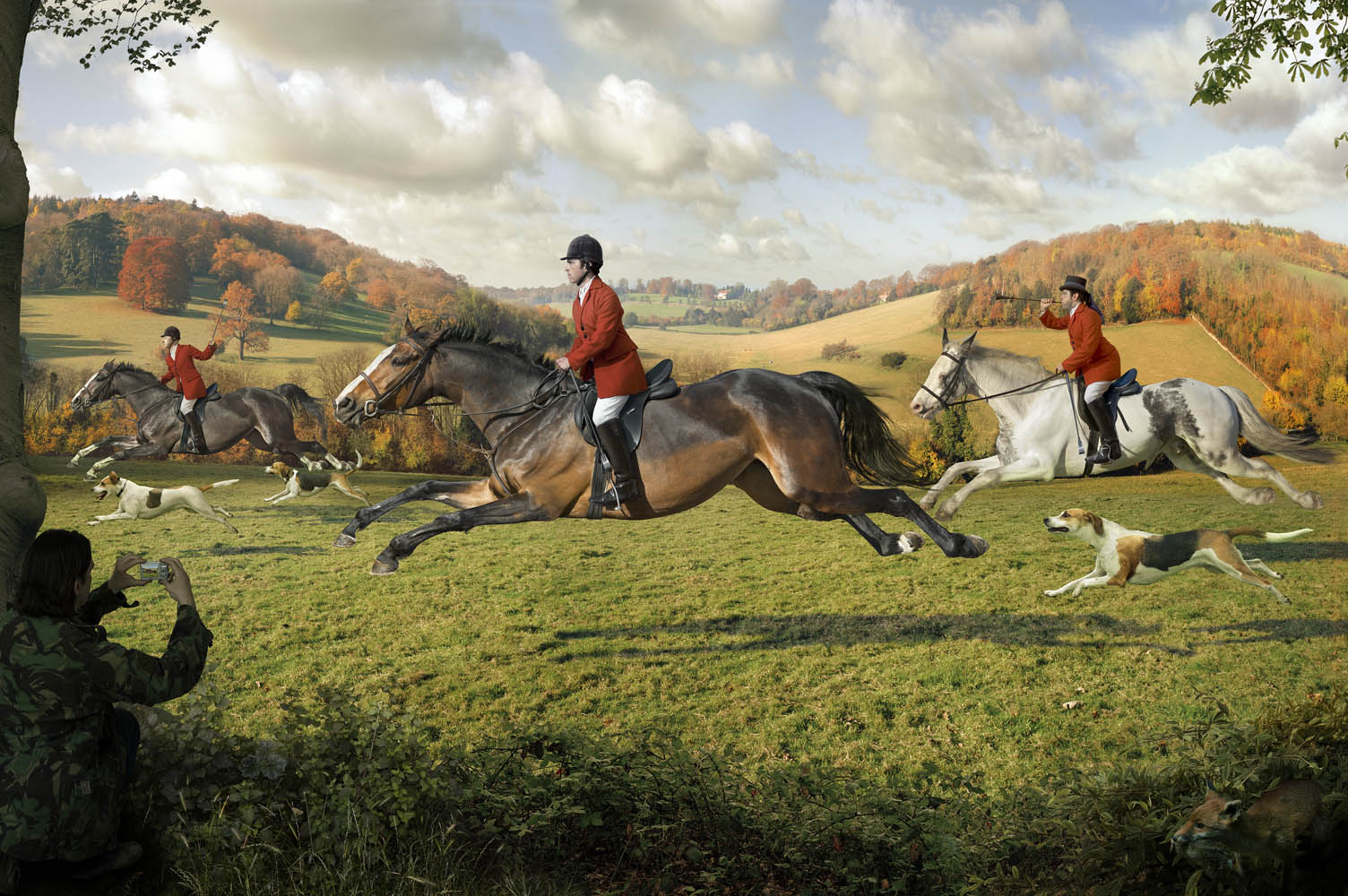
The Hunt
Limited edition Lambda print & Light Box edition; sizes vary.
In this photograph called “The Hunt” I aim to raise questions about traditional understandings of photography and its status in a world of digital imagery.
At first glance the scene seems very traditional; over beautiful rolling hills of English countryside, red-coated fox hunters and fox hounds pursue their quarry. The image recalls a time of order and certainty; man’s control and authority over nature asserted, man’s place in the world understood, man’s hierarchical position in relation to his fellow man assumed.
However it quickly becomes apparent that everything is not as it should be. The gait of the horses and dogs seems odd and unnatural. The horses run according to the painterly convention known as the ‘flying gallop’. The term refers to the custom, common in nineteenth century paintings, of depicting horses running in a fashion that is completely un-natural and inaccurate. This convention of oil painting has been fully realised photographically and is so at odds with our modern day visual understanding as to seem almost comical.
During the 1870s instantaneous photography demonstrated that no galloping horse ever comes close to this posture whilst galloping across a level surface. However, the illusion of the flying gallop had become so commonplace and accepted that, at the time, many questioned the accuracy of photography.
The eventual correction of the flying gallop in the light of photography’s revelation was based on the belief that photography was a “mechanical unimpeachable witness”.
In the age of digital photography the status of photography as an “unimpeachable witness” has been undermined. Photography is now as readily malleable and editable as a painting.
In the foreground a hunt saboteur records the scene. A now common feature at English hunts, hunt saboteurs are animal welfare activists who protest the unnecessary cruelty of fox hunting. A common tactic is to monitor and document the hunt for animal welfare abuses. The hunter becomes the hunted and the ironies and contradictions of photography’s various uses are exposed.
Photography is often discussed using metaphorical language that suggests it is some kind of hunt. Photographers, “load” their cameras, they “fire” the flash and “shoot” and “capture” their subjects. The phrase “snapshot” is actually a hunting term referring to a quick shot taken without aim. Photographers often discuss their craft as a “pursuit” of the “decisive moment” with the photographer seen as some kind of predator:
“I prowled the streets all day, feeling very strung-up and ready to pounce, determined to ‘trap’ life — to preserve life in the act of living..”
Henri Cartier-Bresson
Both hunting and photography, it could be argued, result in a kind of death; literal death in the case of hunting; metaphorical death in photography, in as much as the subject is reduced to an inanimate, cold, object that inevitably recalls a life past.
Henri Cartier-Bresson once said:
“…Once the picture is in the box, I’m not all that interested in what happens next. Hunters, after all, aren’t cooks.”
This photograph investigates and questions the metaphor of photography as a hunt, suggesting that, in the digital age where the photographic moment can be endlessly reworked and edited after the event, the role of the photographer might actually be more akin to the cook, rather than the hunter, after all.
-
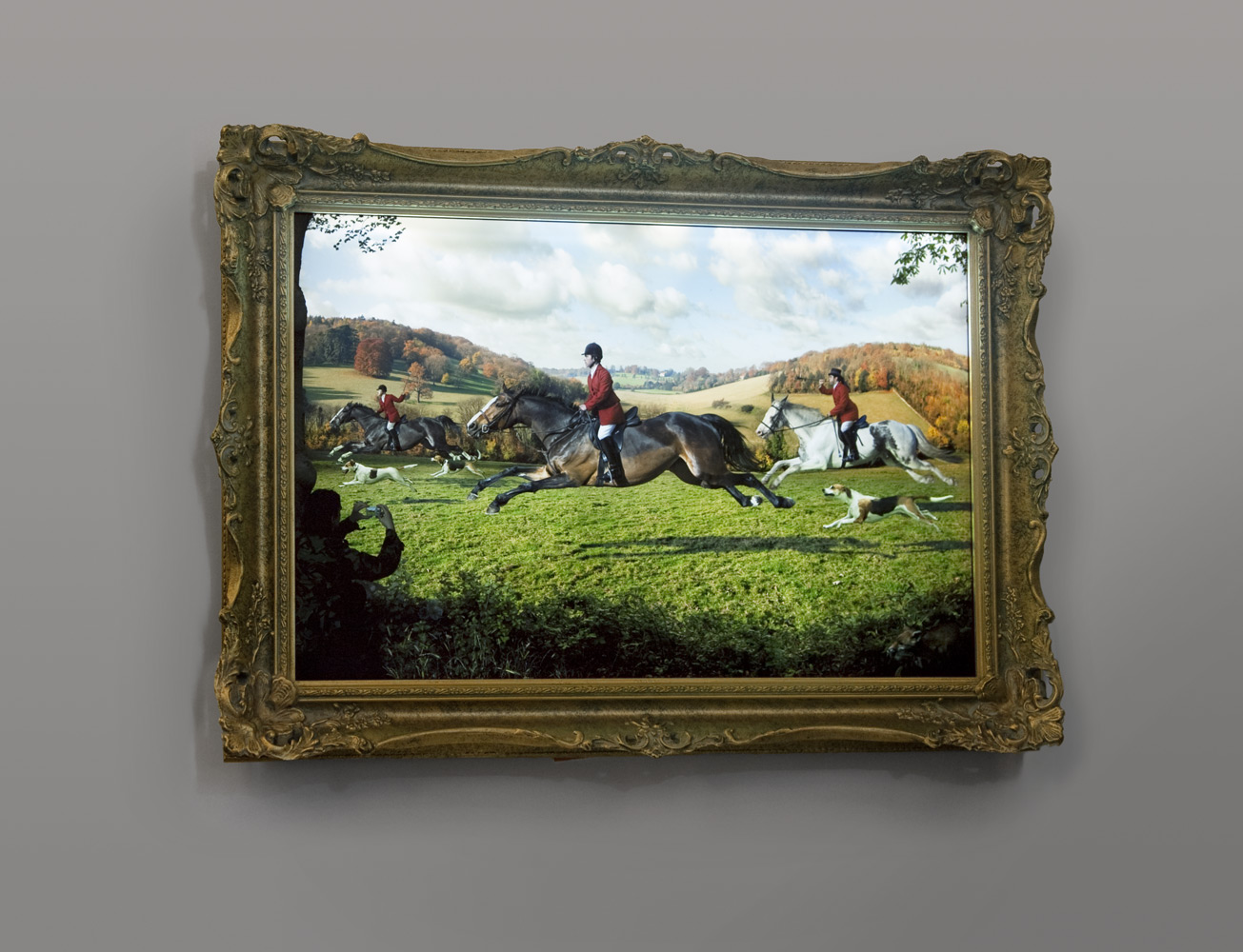
The Hunt
Limited edition Lambda print & Light Box edition; sizes vary.
In this photograph called “The Hunt” I aim to raise questions about traditional understandings of photography and its status in a world of digital imagery.
At first glance the scene seems very traditional; over beautiful rolling hills of English countryside, red-coated fox hunters and fox hounds pursue their quarry. The image recalls a time of order and certainty; man’s control and authority over nature asserted, man’s place in the world understood, man’s hierarchical position in relation to his fellow man assumed.
However it quickly becomes apparent that everything is not as it should be. The gait of the horses and dogs seems odd and unnatural. The horses run according to the painterly convention known as the ‘flying gallop’. The term refers to the custom, common in nineteenth century paintings, of depicting horses running in a fashion that is completely un-natural and inaccurate. This convention of oil painting has been fully realised photographically and is so at odds with our modern day visual understanding as to seem almost comical.
During the 1870s instantaneous photography demonstrated that no galloping horse ever comes close to this posture whilst galloping across a level surface. However, the illusion of the flying gallop had become so commonplace and accepted that, at the time, many questioned the accuracy of photography.
The eventual correction of the flying gallop in the light of photography’s revelation was based on the belief that photography was a “mechanical unimpeachable witness”.
In the age of digital photography the status of photography as an “unimpeachable witness” has been undermined. Photography is now as readily malleable and editable as a painting.
In the foreground a hunt saboteur records the scene. A now common feature at English hunts, hunt saboteurs are animal welfare activists who protest the unnecessary cruelty of fox hunting. A common tactic is to monitor and document the hunt for animal welfare abuses. The hunter becomes the hunted and the ironies and contradictions of photography’s various uses are exposed.
Photography is often discussed using metaphorical language that suggests it is some kind of hunt. Photographers, “load” their cameras, they “fire” the flash and “shoot” and “capture” their subjects. The phrase “snapshot” is actually a hunting term referring to a quick shot taken without aim. Photographers often discuss their craft as a “pursuit” of the “decisive moment” with the photographer seen as some kind of predator:
“I prowled the streets all day, feeling very strung-up and ready to pounce, determined to ‘trap’ life — to preserve life in the act of living..”
Henri Cartier-Bresson
Both hunting and photography, it could be argued, result in a kind of death; literal death in the case of hunting; metaphorical death in photography, in as much as the subject is reduced to an inanimate, cold, object that inevitably recalls a life past.
Henri Cartier-Bresson once said:
“…Once the picture is in the box, I’m not all that interested in what happens next. Hunters, after all, aren’t cooks.”
This photograph investigates and questions the metaphor of photography as a hunt, suggesting that, in the digital age where the photographic moment can be endlessly reworked and edited after the event, the role of the photographer might actually be more akin to the cook, rather than the hunter, after all.
-
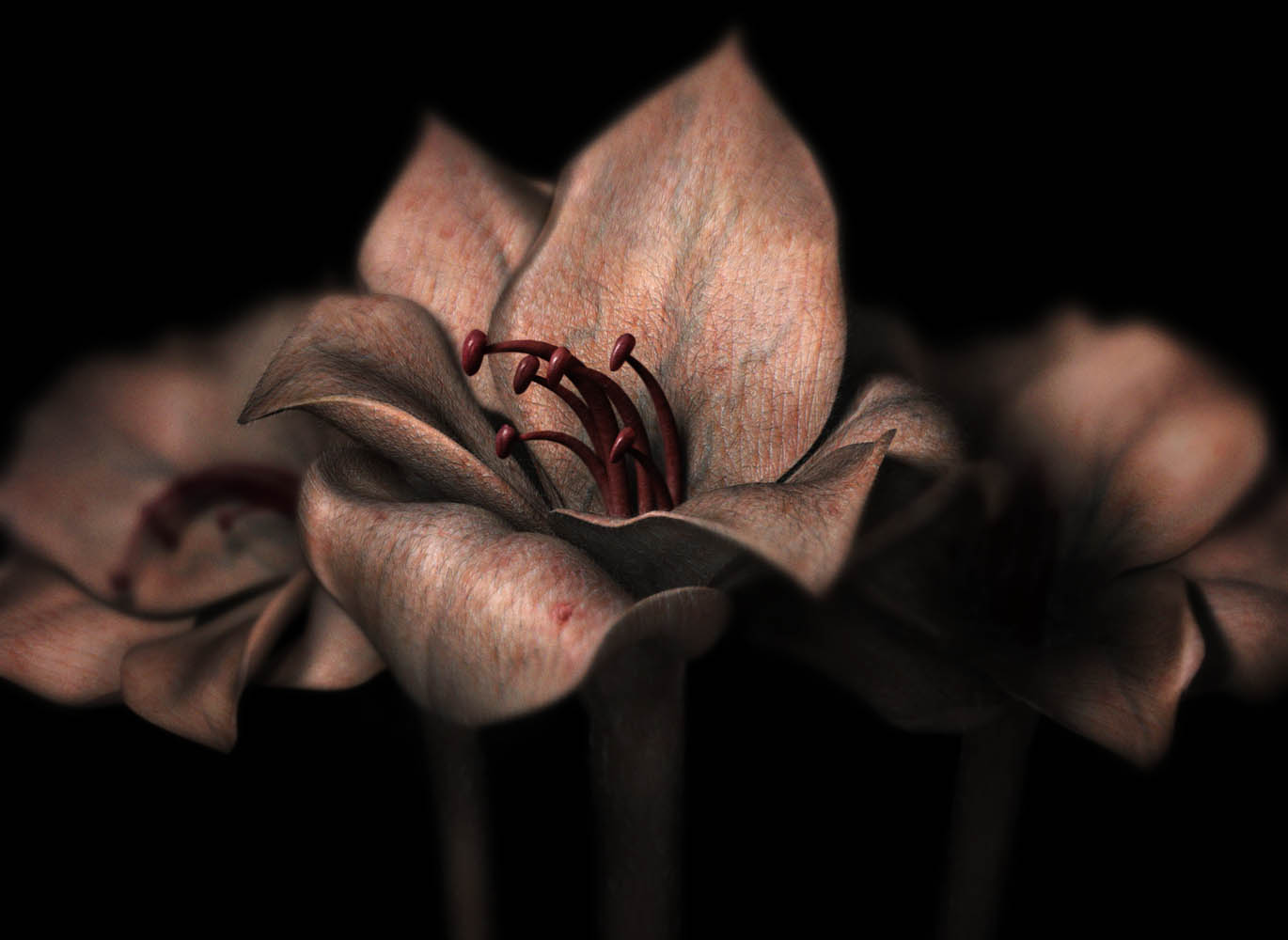
-
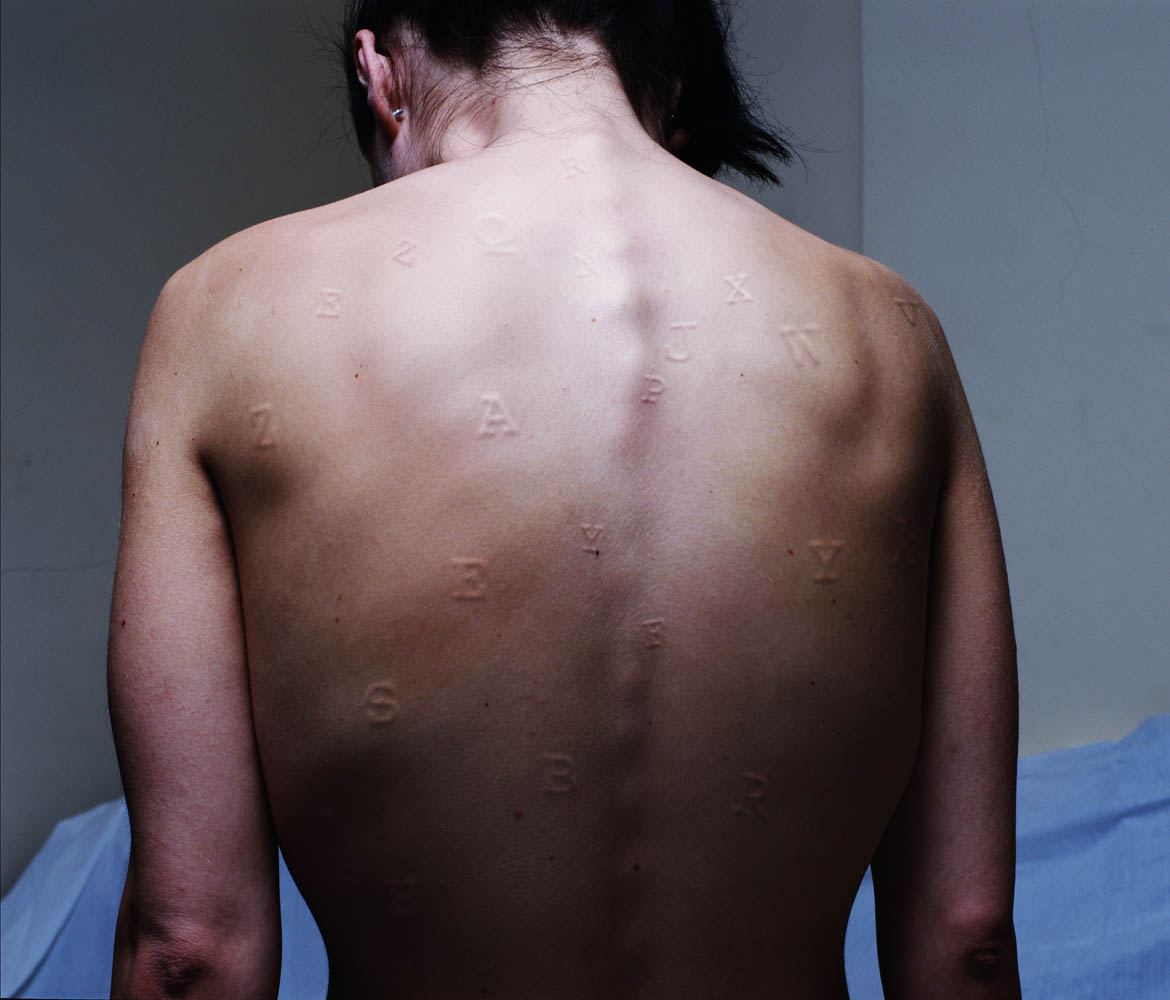
-

-

-
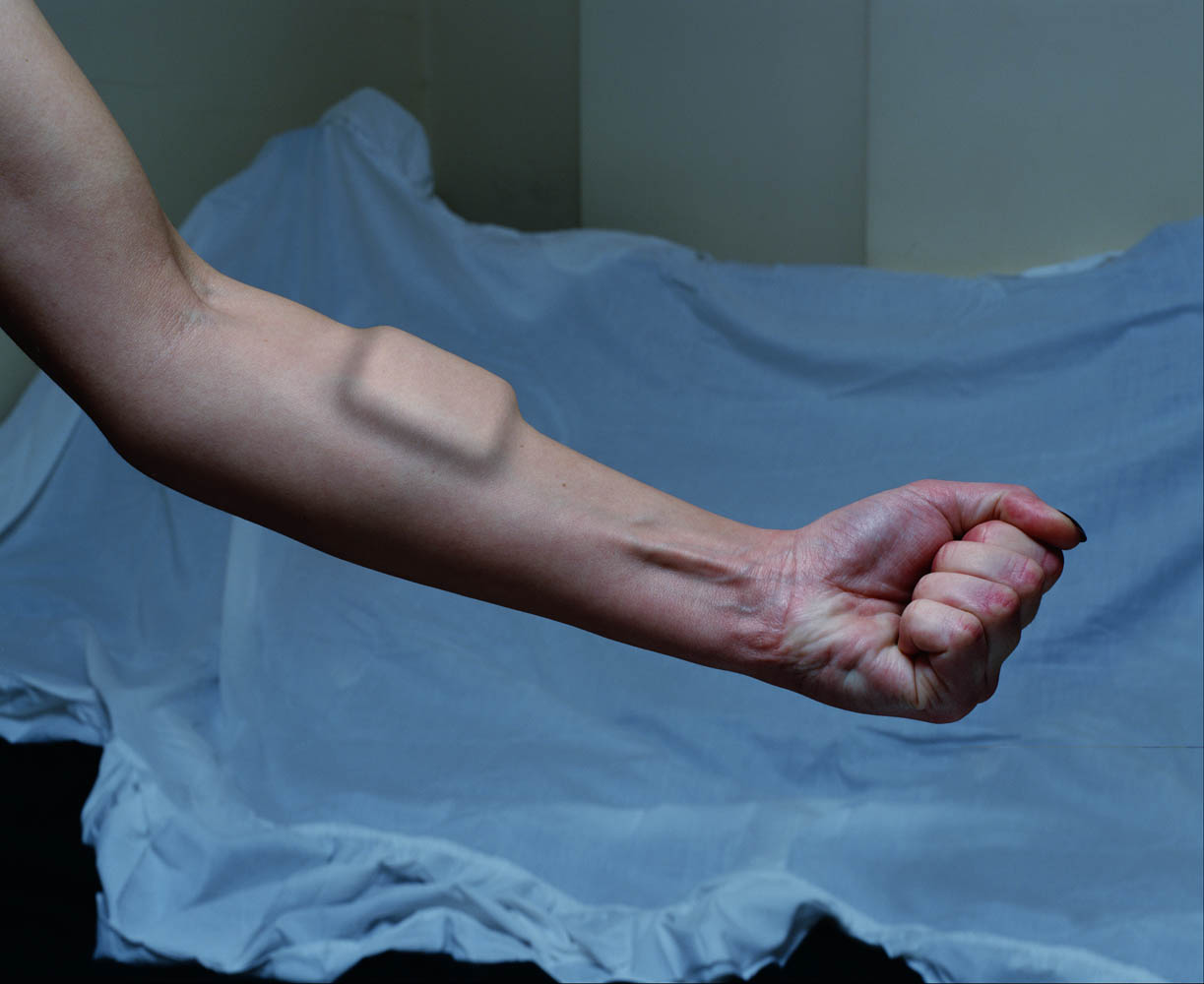
-
